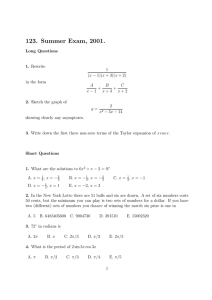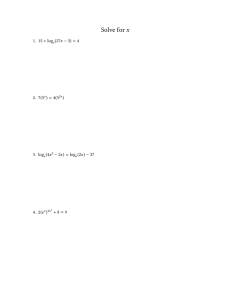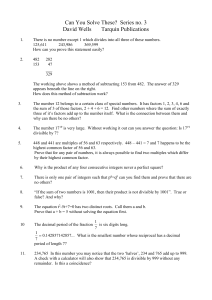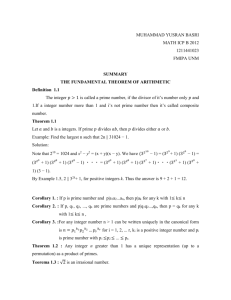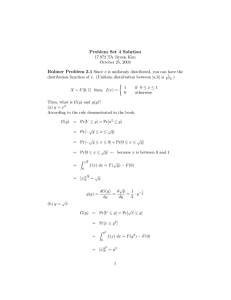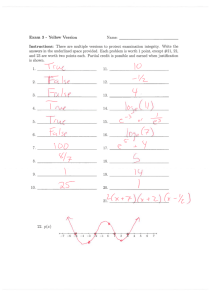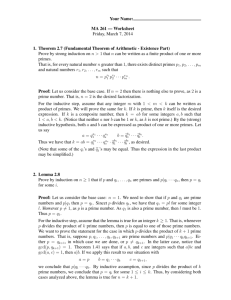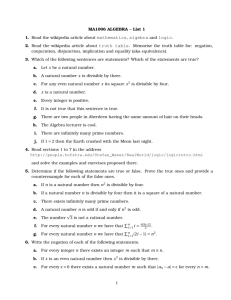How unexpected is the Prime Number Theorem? Let p1, ··· ,p n be
advertisement
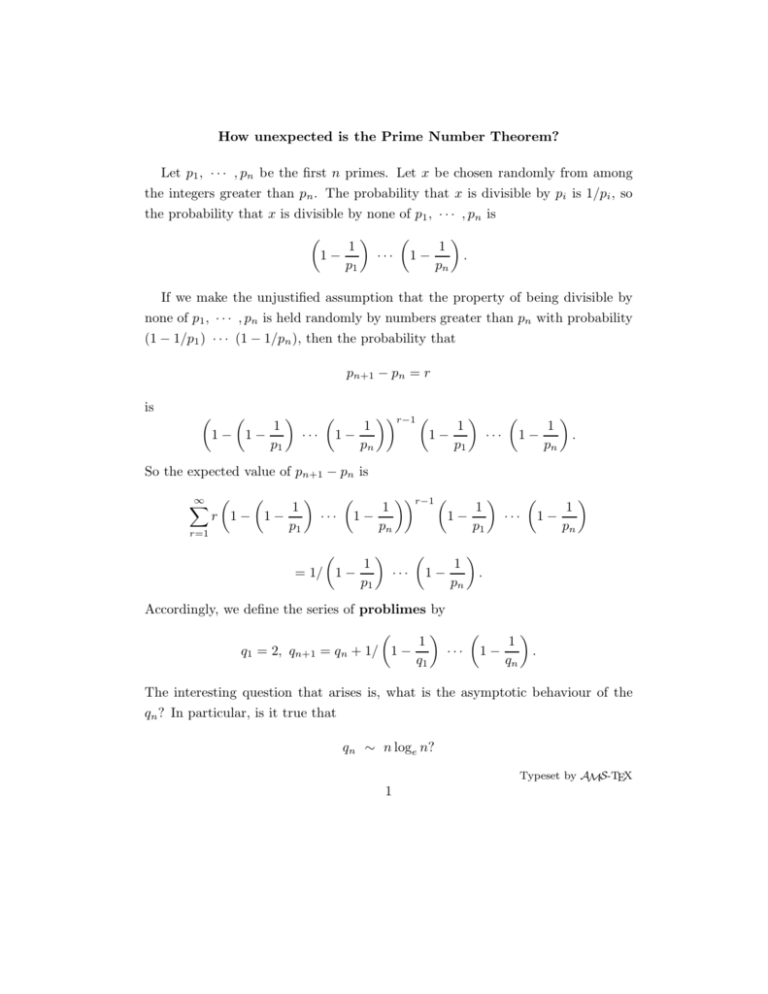
How unexpected is the Prime Number Theorem?
Let p1 , · · · , pn be the first n primes. Let x be chosen randomly from among
the integers greater than pn . The probability that x is divisible by pi is 1/pi , so
the probability that x is divisible by none of p1 , · · · , pn is
1
1
··· 1 −
.
1−
p1
pn
If we make the unjustified assumption that the property of being divisible by
none of p1 , · · · , pn is held randomly by numbers greater than pn with probability
(1 − 1/p1 ) · · · (1 − 1/pn ), then the probability that
pn+1 − pn = r
is
r−1 1
1
1
1
··· 1 −
1−
··· 1 −
.
1− 1−
p1
pn
p1
pn
So the expected value of pn+1 − pn is
r−1 ∞
X
1
1
1
1
r 1− 1−
··· 1 −
1−
··· 1 −
p1
pn
p1
pn
r=1
1
= 1/ 1 −
p1
···
1
1−
pn
.
Accordingly, we define the series of problimes by
q1 = 2, qn+1
1
= qn + 1/ 1 −
q1
···
1
1−
qn
.
The interesting question that arises is, what is the asymptotic behaviour of the
qn ? In particular, is it true that
qn ∼ n loge n?
Typeset by AMS-TEX
1
2
If this is true, then perhaps the prime number theorem is a little less surprising,
since it is a cosequence of the prime number theorem that
pn ∼ n loge n.
I have been able to prove that
(1) qn /n is unbounded,
(2) qn /n1+ǫ → 0 as n → ∞ for any fixed ǫ > 0,
but I have not been able to prove that qn /n is eventually monotonic increasing.
It is clear that the problimes soon become non-integral. It may be more attractive to study the various integral sequences defined by
q1 = 2, qn+1
1
1
= qn + F 1/ 1 −
··· 1 −
,
q1
qn
where
F (x) = [x], the greatest integer not greater than x,
F (x) =< x >, the closest integer to x, or
F (x) = {x}, the least integer not less than x.
The first few terms of each of these sequences are given in the following table,
together with the primes for comparison:
n
pn
qn∗
qn , []
qn , <>
qn , {}
1
2
2.0
2
2
2
2
3
4.0
4
4
4
3
5
6.7
6
7
7
4
7
9.8
9
10
11
5
11
13.3
12
13
15
6
13
17.1
15
17
19
7
17
21.1
19
21
23
8
19
25.3
23
25
28
9
23
29.7
27
29
33
10
29
34.2
31
34
38
n
12
pn
37
qn
43.7
qn , []
40
qn , <> 44
qn , {} 48
13
41
48.6
45
49
53
14
43
53.6
50
54
58
15
47
58.7
55
59
63
16
53
63.9
60
64
68
17
59
69.2
65
69
73
18
61
74.6
70
74
79
19
67
80.0
75
79
85
20
71
85.5
80
84
91
21
73
91.1
86
90
97
11
31
38.9
35
39
43
3
∗
to 1 decimal place
P. Erdös (written communication) believes that he can prove by Tauberian
arguments that (qn+1 − qn )/ loge n → 1, and hence that qn /n loge n → 1.
I am indebted to the referee and to Richard K. Guy for their helpful comments
and suggestions.

